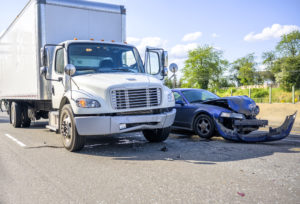 The screech of brakes, the jarring impact, the sudden silence that follows – car accidents happen in the blink of an eye, leaving drivers and passengers disoriented and shaken. In those crucial moments after a collision, your body floods with adrenaline, creating a deceptive sense of well-being that can mask serious injuries. This natural fight-or-flight response often leads people to believe they’re unharmed when, in reality, they may be dealing with injuries that won’t manifest symptoms for hours or even days.
The screech of brakes, the jarring impact, the sudden silence that follows – car accidents happen in the blink of an eye, leaving drivers and passengers disoriented and shaken. In those crucial moments after a collision, your body floods with adrenaline, creating a deceptive sense of well-being that can mask serious injuries. This natural fight-or-flight response often leads people to believe they’re unharmed when, in reality, they may be dealing with injuries that won’t manifest symptoms for hours or even days.
The immediate aftermath of a car accident is critical, and the actions you take in those first few minutes can significantly impact your health, legal standing, and financial recovery. Whether you’re dealing with a minor fender-bender or a more serious collision, following proper procedures protects not only your immediate safety but also your long-term interests. Understanding what steps to take, regardless of how you feel in the moment, can make the difference between a smooth resolution and months of complications.
Ensure Safety First and Assess the Immediate Situation
Your primary concern immediately following any car accident should be safety – both yours and that of other involved parties. Before doing anything else, take a moment to assess whether you or anyone else requires immediate emergency medical attention. Even if you feel fine, quickly scan yourself and your passengers for obvious signs of injury such as bleeding, difficulty breathing, or loss of consciousness.
If anyone appears seriously injured or unconscious, call 911 immediately and avoid moving them unless they’re in immediate danger from fire or oncoming traffic. However, if the accident is minor and all parties appear uninjured, your next priority is moving vehicles out of traffic flow if possible. Turn on your hazard lights and, if the cars are drivable, carefully move them to the shoulder of the road or a nearby parking lot.
According to personal injury law experts at Steinlaw.com, many accident victims make the mistake of not taking proper safety precautions in the immediate aftermath, potentially putting themselves at risk for secondary accidents. If vehicles cannot be moved safely, leave them where they are and focus on getting everyone to a safe location away from traffic. Set up flares or reflective triangles if you have them, positioning them at least 100 feet behind the accident scene to warn approaching drivers.
Contact Emergency Services and Law Enforcement
Even if the accident seems minor and no one appears injured, contacting law enforcement is often required by law and always recommended. Many states have specific requirements about when accidents must be reported to police, typically involving situations where there are injuries, significant property damage, or disputes about fault. However, having an official police report can be invaluable for insurance claims and potential legal proceedings, regardless of the accident’s severity.
When you call 911, provide clear, factual information about the accident location, the number of vehicles involved, and whether anyone appears injured. Stick to the facts and avoid speculating about fault or the cause of the accident. The dispatcher will determine whether to send police, emergency medical services, or both based on your description of the situation.
While waiting for emergency responders to arrive, avoid discussing fault or admitting responsibility with the other driver. Adrenaline and shock can cloud judgment, and statements made at the scene can be used against you later, even if they’re not entirely accurate. Instead, focus on gathering information and ensuring everyone remains safe until help arrives.
Document Everything Thoroughly
Once safety is ensured and emergency services have been contacted, begin documenting the accident scene comprehensively. This documentation can prove crucial for insurance claims and any potential legal proceedings. Start by taking photographs of all vehicles involved from multiple angles, including wide shots that show the overall scene and close-ups that capture specific damage.
Photograph the accident scene itself, including skid marks, debris, traffic signs or signals, and road conditions. If there are any contributing factors such as construction zones, poor lighting, or weather conditions, document these as well. Take pictures of license plates, and if possible, get photos that show the positions of the vehicles immediately after the accident before they’re moved.
Exchange information with all other drivers involved, including full names, contact information, driver’s license numbers, insurance company names and policy numbers, and vehicle information including make, model, year, and vehicle identification numbers. If there are passengers in any of the vehicles, collect their contact information as well, as they may serve as important witnesses.
Seek Medical Attention Regardless of How You Feel
One of the most critical mistakes people make after car accidents is declining medical attention because they feel fine. Adrenaline is a powerful hormone that can mask pain and injury symptoms for hours or even days after an accident. Many serious injuries, including concussions, internal bleeding, soft tissue damage, and spinal injuries, may not produce noticeable symptoms immediately.
Even if emergency medical personnel at the scene clear you, consider visiting your doctor or an urgent care facility within 24 hours of the accident. This proactive approach serves two important purposes: it ensures that any hidden injuries are identified and treated promptly, and it creates a medical record linking any symptoms or injuries to the accident.
Whiplash, one of the most common car accident injuries, often doesn’t produce symptoms until 12 to 24 hours after the incident. Concussions can have delayed onset symptoms, and internal injuries may not manifest obvious signs until they become serious. Having a medical professional evaluate you creates documentation that can be crucial for insurance claims and establishes a timeline for treatment if injuries do develop.
Contact Your Insurance Company and Consider Legal Consultation
Notify your insurance company about the accident as soon as possible, typically within 24 hours or according to your policy requirements. Provide them with all the documentation you gathered at the scene and be honest about what happened. Your insurance company will guide you through their claims process and explain what coverage applies to your situation.
Be prepared for the possibility that the other driver’s insurance company may contact you seeking a statement or attempting to settle quickly. While you should be cooperative, avoid giving detailed recorded statements or accepting settlement offers without consulting with a legal professional first. Insurance companies often try to minimize payouts, and what seems like a fair offer immediately after an accident may not account for injuries or damages that haven’t fully developed yet.
Remember that the immediate aftermath of a car accident is not the time to make important decisions about settlements or liability. Take time to fully understand the extent of any injuries and damages before making commitments that could affect your future well-being and financial security.


